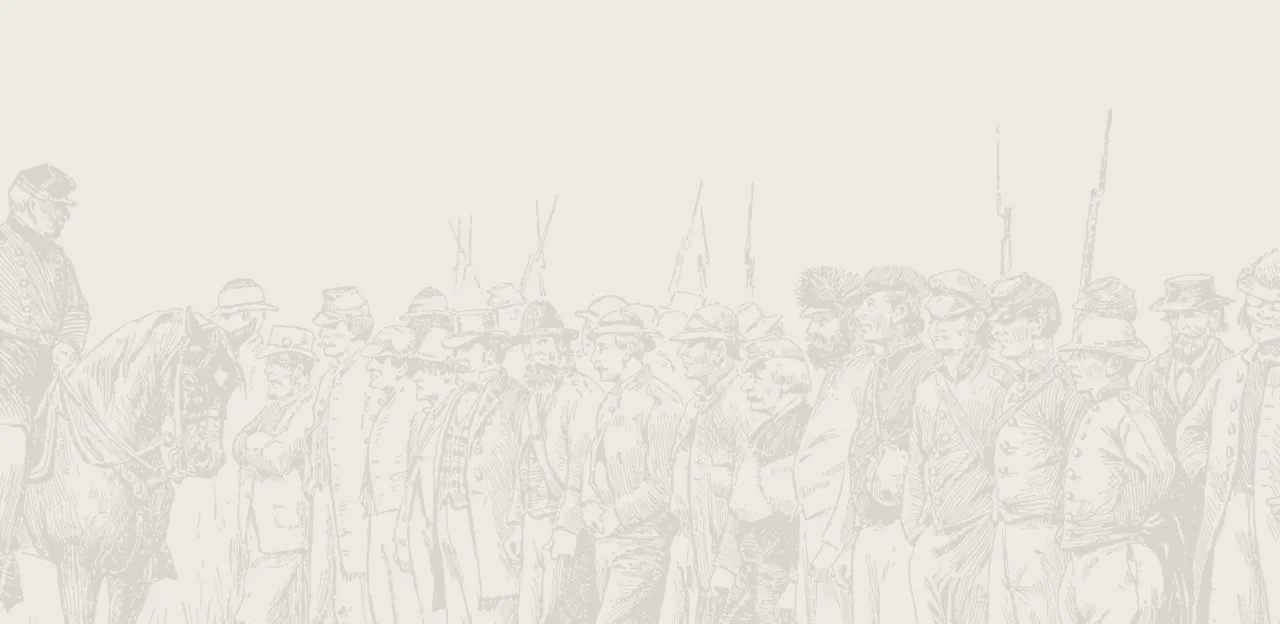Malvern Hill

The Battle of Malvern Hill
By the end of June, 1862, less than a month after taking command of the Army of Northern Virginia, Gen. Robert E. Lee had put his troops on the offensive. The last week of the month, the attacking Confederates drove their blue-clad counterparts from several strong positions outside Richmond, unraveling Maj. Gen. George B. McClellan's scheme to capture the Confederate capital. Lee's unexpected and violent assaults caught McClellan completely off guard. Almost immediately, "Little Mac" determined that he could no longer take Richmond, and set his army into full-blown retreat to the James River. As June ended, the outcome of the campaign was no longer in doubt, as McClellan moved to the river and the safety of navy gunboats, with Lee’s army close behind.
The morning of July 1, after holding off the Confederates at Glendale the day before, McClellan rallied his army on the crest of Malvern Hill, two miles north of the James. Here, McClellan prepared to hold off Lee’s reassembled divisions before beginning his retreat southeast to his new supply base at Harrison’s Landing. Maj. Gen. Fitz John Porter’s V Corps assumed a position along the western ridge of the hill, close to the Cornelius Crew house. Along the eastern edge of the ridge on the farm of Nathaniel West were elements of the II, III, IV, and VI Corps, under Maj. Gens. Edwin Sumner, Samuel Heintzelman, Darius Couch and William Franklin, respectively. A total of 18,000 Union infantrymen occupied the position, reinforced by the remainder of the army in reserve behind the hill. Brig. Gen. Henry Hunt, the Union Chief of Artillery, deployed around 40 pieces of artillery along the ridge, straddling the Willis Church Road and facing west, north and east. For the first time during the Seven Days battles, the entire Union army would be on the same battlefield at the same time.
That morning, Confederate Gen. Robert E. Lee gathered his generals near his headquarters on Willis Church Road to discuss the possibility of a renewed assault. Frustrated by his army’s failure on the previous day to trap and crush McClellan’s army at Glendale, Lee was anxious to resume fighting and deliver one last crushing blow to the Federals before they could retreat to the James. Lee would commit some twenty brigades under seven division commanders to the attack.
To counter the Union artillery, Lee directed two "grand batteries" to be placed on the ends of his line to weaken the Federal guns along the Crew house ridge under a cross-fire. Following the bombardment, Maj. Gens. John B. Magruder and Thomas J. “Stonewall” Jackson were to assault simultaneously on either side of Carter’s Mill Road and Willis Church Road, with Maj. Gen. D.H. Hill’s division attacking from the woods, while Maj. Gen. Benjamin Huger drove at Porter’s left flank along Malvern Cliffs. Lee directed Maj. Gen. Theophilus Holmes to guard his flank along the River Road, and advised Maj. Gens. James Longstreet’s and A.P. Hill’s badly cut-up divisions to wait in reserve along the Long Bridge Road.
However, Lee’s official orders that morning were uncharacteristically vague and poorly communicated. More confusion with maps and the local road network continued to plague the Confederates. The broken ground on the ends of the Confederate lines made it difficult for the flanks to coordinate attacks. Magruder’s forces arrived frustratingly late to the battlefield. Ultimately, the two grand batteries failed to materialize, largely due to poor coordination among Lee’s division commanders and effective Yankee counter-battery fire. Confusion over the signal for the infantry assault, faulty maps and topographical errors delayed the arrival of several units and resulted in a piecemeal advance of D.H. Hill’s and “Stonewall” Jackson’s divisions.
The effect of the Federal guns on the advancing Confederate lines was murderous. Union artillerists mowed down wave after wave of Confederates. Damaged and depleted batteries were quickly replaced with fresh guns and men. Toward dusk, however, the perseverant Confederates came within 50 yards of the Federal line. Intense hand-to-hand combat ensued on the left of the Union flank on the steep heights of Malvern Cliffs. Reinforcements on both flanks were called forward to help repulse the oncoming Rebels.
By nightfall, Lee finally canceled the attacks. Union artillery ceased fire around 8:30 p.m. D.H. Hill surveyed the carnage on the bloody field and remarked, disgustedly, “it was not war, it was murder.” The battle had exacted around 8,000 casualties on both sides, with nearly twice as many Confederates fallen as Union men.
McClellan’s Peninsula Campaign to capture the Confederate capital at Richmond was over. The battles between June 25 and July 1 produced over 27,000 casualties for both sides, a horrific total for the second year of the Civil War. The fighting experience and lessons learned for both armies during the Seven Days battles effected the future of the war in profound ways.





